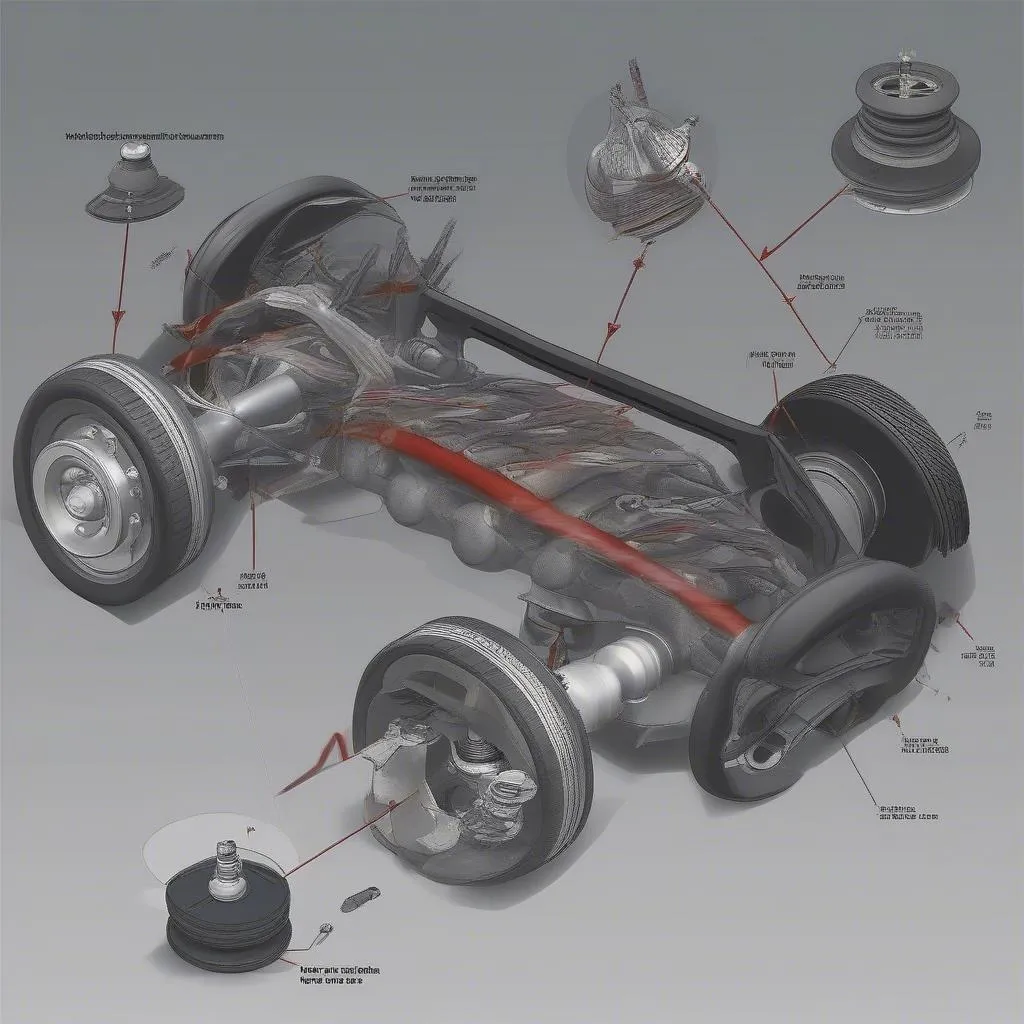Imagine this: you’re driving down the road, and suddenly, your car starts to wiggle. It feels like you’re driving on a bumpy road, even though the surface is smooth. You might even hear a clunking sound as the car wobbles. This is a common issue, and it can be caused by a variety of factors.
What Does It Mean When Your Car Wiggles?
A “wiggle car” often signifies a problem with your car’s suspension system. This system is responsible for absorbing shocks and bumps from the road, keeping your car stable and comfortable. Think of your car’s suspension as a set of shock absorbers, springs, and other components that work together to create a smooth ride.
Potential Causes of a Wiggle Car
- Worn-out shock absorbers: Shock absorbers are responsible for damping vibrations from the road. As they wear out, they can no longer effectively absorb these vibrations, leading to a shaky ride. You might even notice your car bouncing excessively after going over a bump.
- Damaged or worn-out suspension components: Other suspension components, such as springs, control arms, ball joints, and tie rods, can also wear out over time. This can cause a variety of issues, including a “wiggle car” phenomenon.
- Misaligned wheels: Wheels that are misaligned can cause your car to pull to one side, vibrate at certain speeds, and even wear down tires prematurely. Misaligned wheels can also cause your car to “wiggle” at higher speeds.
- Tire problems: Damaged or worn-out tires can affect how your car handles, causing it to “wiggle” or even lose traction.
- Loose wheel bearings: Wheel bearings support the weight of your car and allow the wheels to rotate smoothly. If they become worn or loose, they can cause noise, shaking, and even a “wiggle car” sensation.
Solutions to Fix a Wiggle Car
The best course of action to resolve a “wiggle car” issue is to visit a professional mechanic. They can diagnose the root cause of the problem and recommend the appropriate repairs. However, here are some initial steps you can take:
1. Check Tire Pressure and Condition
- Tire pressure: Ensure all your tires are inflated to the recommended pressure levels found in your car’s owner’s manual.
- Tire condition: Examine your tires for signs of wear and tear, such as uneven tread wear, bulges, or punctures.
2. Inspect Your Suspension System
- Visual inspection: Visually inspect your suspension components for any signs of damage, such as cracks, leaks, or loose parts.
- Ride test: Take your car for a short drive and pay attention to how it handles. Notice any excessive bouncing, shaking, or pulling to one side.
3. Seek Professional Help
If you suspect a problem with your suspension system, it’s essential to consult a professional mechanic for a thorough diagnosis and repair.
 Worn-out shock absorbers on a car suspension system
Worn-out shock absorbers on a car suspension system
Frequently Asked Questions
Q: How can I tell if my shock absorbers are worn out?
A: You can test them by pushing down on each corner of your car. If it bounces excessively or takes a long time to settle back down, your shock absorbers may need replacing.
Q: How often should I get my suspension checked?
A: Most experts recommend getting your suspension inspected every 12,000 miles or yearly, whichever comes first.
Q: How can I prevent my car from wiggling?
A: Regular maintenance is key! You can help prevent a “wiggle car” by:
- Maintaining proper tire pressure: Regularly check your tire pressure and inflate them to the recommended levels.
- Rotating your tires: Rotate your tires every 5,000-7,500 miles to ensure even wear and tear.
- Following your car’s maintenance schedule: Schedule regular inspections and maintenance for your suspension system.
Other Related Issues
If you’re experiencing a “wiggle car,” you might also be dealing with related issues such as:
- Car won’t turn over but has power: [Link to relevant article on Diag XCar]
- Scan tool not connecting to vehicle: [Link to relevant article on Diag XCar]
- Scan tool says “no link” on a 2000 Nissan Maxima: [Link to relevant article on Diag XCar]
- Scan tool lost communication with a 2002 Silverado: [Link to relevant article on Diag XCar]
Need Help with Diagnostics Tools?
If you’re a professional mechanic and need help setting up your diagnostic tools, contact us at +84767531508. We offer 24/7 support for setting up diagnostic tools and have experts ready to answer your questions.
 Mechanic using a diagnostic scan tool to troubleshoot a car
Mechanic using a diagnostic scan tool to troubleshoot a car
Don’t let a “wiggle car” take the fun out of driving! Keep your car running smoothly and safely by addressing any suspension issues promptly.


